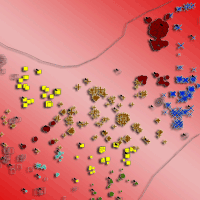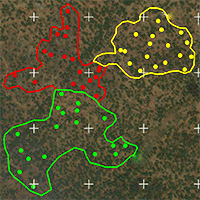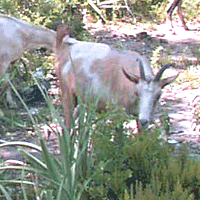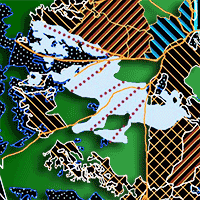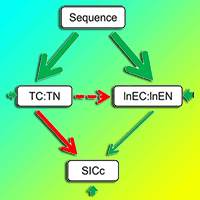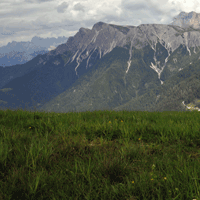
Tree encroachment dynamics in heathlands of north-west Italy: the fire regime hypothesis
iForest - Biogeosciences and Forestry, Volume 3, Issue 5, Pages 137-143 (2010)
doi: https://doi.org/10.3832/ifor0548-003
Published: Sep 27, 2010 - Copyright © 2010 SISEF
Research Articles
Abstract
Tree encroachment is one of the primary conservation issues in Calluna-heathlands, a priority habitat in Europe. Improving understanding of the ecological factors that trigger transitions to woodlands is key to developing strategies for heathlands management. The irrational use of fire has been recognized as one of the key factors that drives the loss of heathlands of north-west Italy. The effect of high frequency pastoral burning on the replacement of heathlands by grasslands has been documented by several studies. The relationship between fire and tree encroachment is less clear. The paper examines the effect of the fire regime on the encroachment of Populus tremula L. and Betula pendula Roth. in the heathland. The study was carried out at the Managed Nature Reserve of Vauda (7° 41’ E, 45° 13’ N), which includes one of the most valuable heathlands of north-western Italy. The experimental design consisted of analysing the age structure, dendrometric variables and the species composition of three aspen and birch stands, circular-shaped and isolated within the heathland matrix. From 1986 to 2009 all stands experienced the same fire regime due to pastoral burning. Wildfires of similar behaviour occurred in 1998, 2003 and 2008 and determined the stand structure observed in 2009. The results evidenced that fire acts as a catalyst not only for seedlings establishment, as previously documented, but also for woodland expansion in the heathland. After initial establishment, stands showed a concentric encroachment dynamic, mainly due to aspen root suckering after post-fire stem mortality, whose steps of expansion coincided with the return interval of wildfires. Moreover, aspen determined the loss of heathland characteristic species, whose relative abundances were inversely correlated to aspen density along a gradient from the stands centre to the surrounding heathland. The regulation of current burning practices by prescribed burning, integrated with rational grazing, presents the next research questions to be addressed.
Keywords
Tree encroachment, Heathland, Populus tremula, Conservation management, Prescribed burning
Authors’ Info
Authors’ address
Corresponding author
Paper Info
Citation
Ascoli D, Bovio G (2010). Tree encroachment dynamics in heathlands of north-west Italy: the fire regime hypothesis. iForest 3: 137-143. - doi: 10.3832/ifor0548-003
Paper history
Received: May 03, 2010
Accepted: May 28, 2010
First online: Sep 27, 2010
Publication Date: Sep 27, 2010
Publication Time: 4.07 months
Copyright Information
© SISEF - The Italian Society of Silviculture and Forest Ecology 2010
Open Access
This article is distributed under the terms of the Creative Commons Attribution-Non Commercial 4.0 International (https://creativecommons.org/licenses/by-nc/4.0/), which permits unrestricted use, distribution, and reproduction in any medium, provided you give appropriate credit to the original author(s) and the source, provide a link to the Creative Commons license, and indicate if changes were made.
Web Metrics
Breakdown by View Type
Article Usage
Total Article Views: 60454
(from publication date up to now)
Breakdown by View Type
HTML Page Views: 51055
Abstract Page Views: 3695
PDF Downloads: 4193
Citation/Reference Downloads: 34
XML Downloads: 1477
Web Metrics
Days since publication: 5549
Overall contacts: 60454
Avg. contacts per week: 76.26
Citation Metrics
Article Citations
Article citations are based on data periodically collected from the Clarivate Web of Science web site
(last update: Mar 2025)
Total number of cites (since 2010): 27
Average cites per year: 1.69
Publication Metrics
by Dimensions ©
Articles citing this article
List of the papers citing this article based on CrossRef Cited-by.
References
Developing a prescribed burning expertise in Italy: learning fire experiments. PhD thesis, Università degli Studi di Torino.
Gscholar
Developing an adaptive management approach to prescribed burning: a longterm heathland conservation experiment in north-west Italy. International Journal of Wildland Fire 18: 727-735.
CrossRef | Gscholar
Il vento e gli incendi boschivi. Indagine sulla ventosità invernale in Valle d’Aosta. Regione Autonoma Valle d’Aosta, Aosta, Italy.
Gscholar
Une métode d’analyse phytologique des prairies. Annales Agronomiques 22: 5-41.
Gscholar
Vegetation ecology of central Europe. Cambridge University Press, Cambridge, UK and New York, USA.
Gscholar
Fire management: voluntary guidelines. Principles and strategic actions. Fire management working paper 17. Rome, Italy.
Gscholar
Agro-forest landscape dynamics during the last 50 years: the case study of two north-western Italian parks. In: “Patterns and processes in forest landscapes. Consequences of human management” (La Fortezza R, Sanesi G eds). Accademia Italiana di Scienze Forestali, Florence, Italy, pp. 235-240.
Gscholar
The Eurasian fire in nature conservation network (EFNCN): advances in the use of prescribed fire in nature conservation, landscape management, forestry and carbon management in temperate-boreal Europe and adjoining countries in South-east Europe, Caucasus, Central Asia and Northeast Asia. In: Proceeding of IV International “Wildland Fire Conference”, Sevilla, Spain.
Gscholar
Vegetational aspects of Calluna heathlands in the western Po plain (Turin, NW Piedmont, Italy). Alliona 34: 343-348.
Gscholar
L’azione antropica sulla vegetazione forestale in rapporto alla fitogeografia. Italian Military Geographic Institute 8: 873-896.
Gscholar
Conservazione e gestione della flora e degli habitat nelle Alpi occidentali del sud. Atti finali Progetto Interreg IIIA, Regione Piemonte, Turin, Italy.
Gscholar
Gli habitat della Regione Lombardia: stato di conservazione e loro mappatura sul territorio. Regione Lombardia, Milan, Italy.
Gscholar
Guida al riconoscimento di ambienti e specie della direttiva habitat in Piemonte. Regione Piemonte - IPLA, Turin, Italy.
Gscholar


